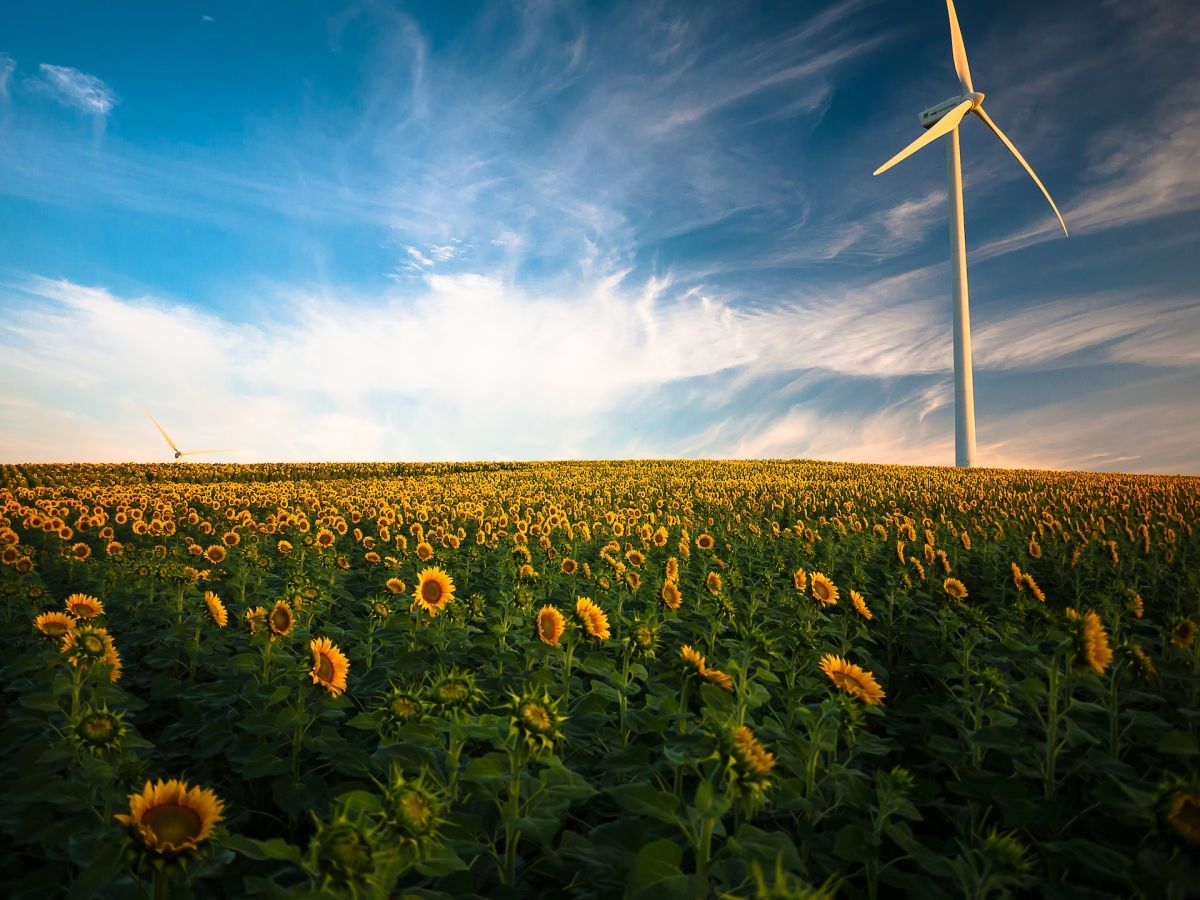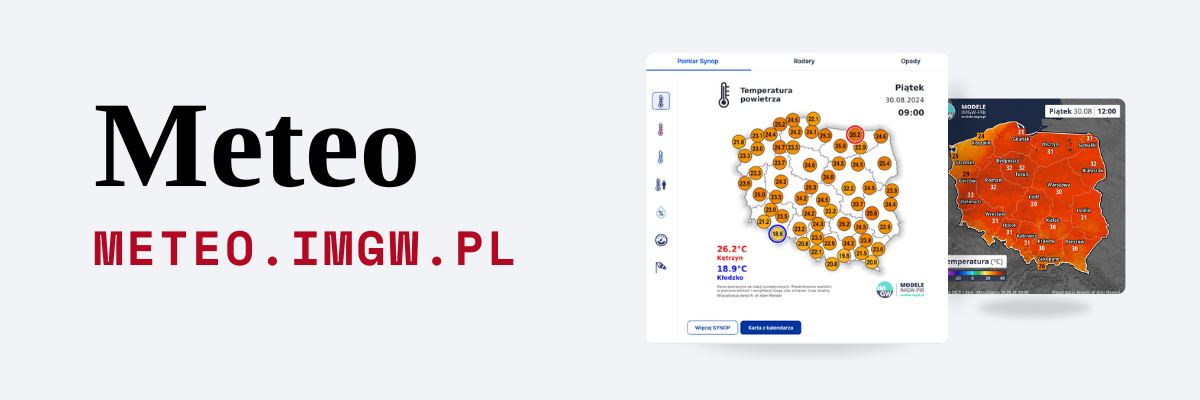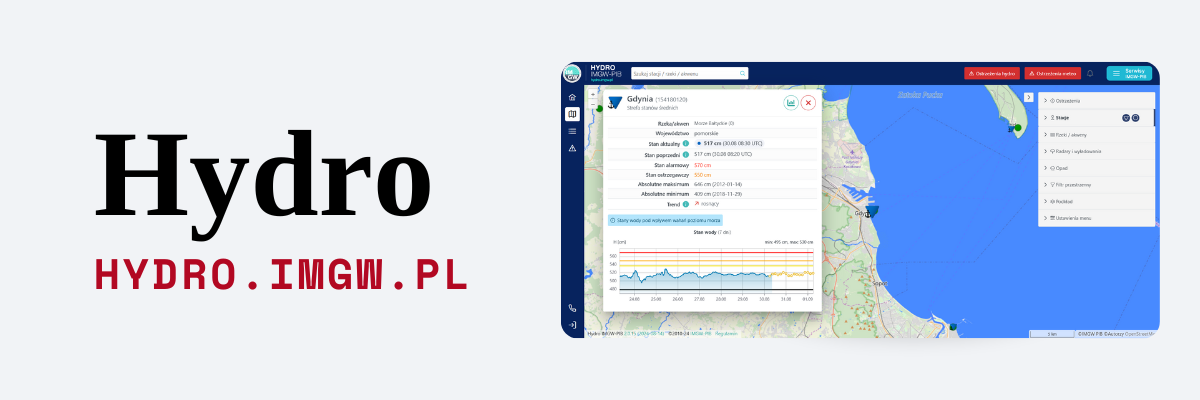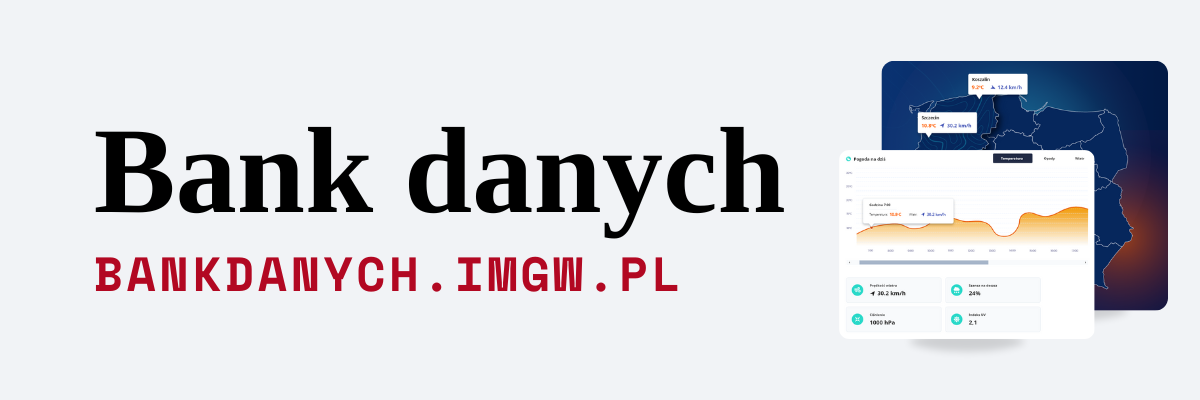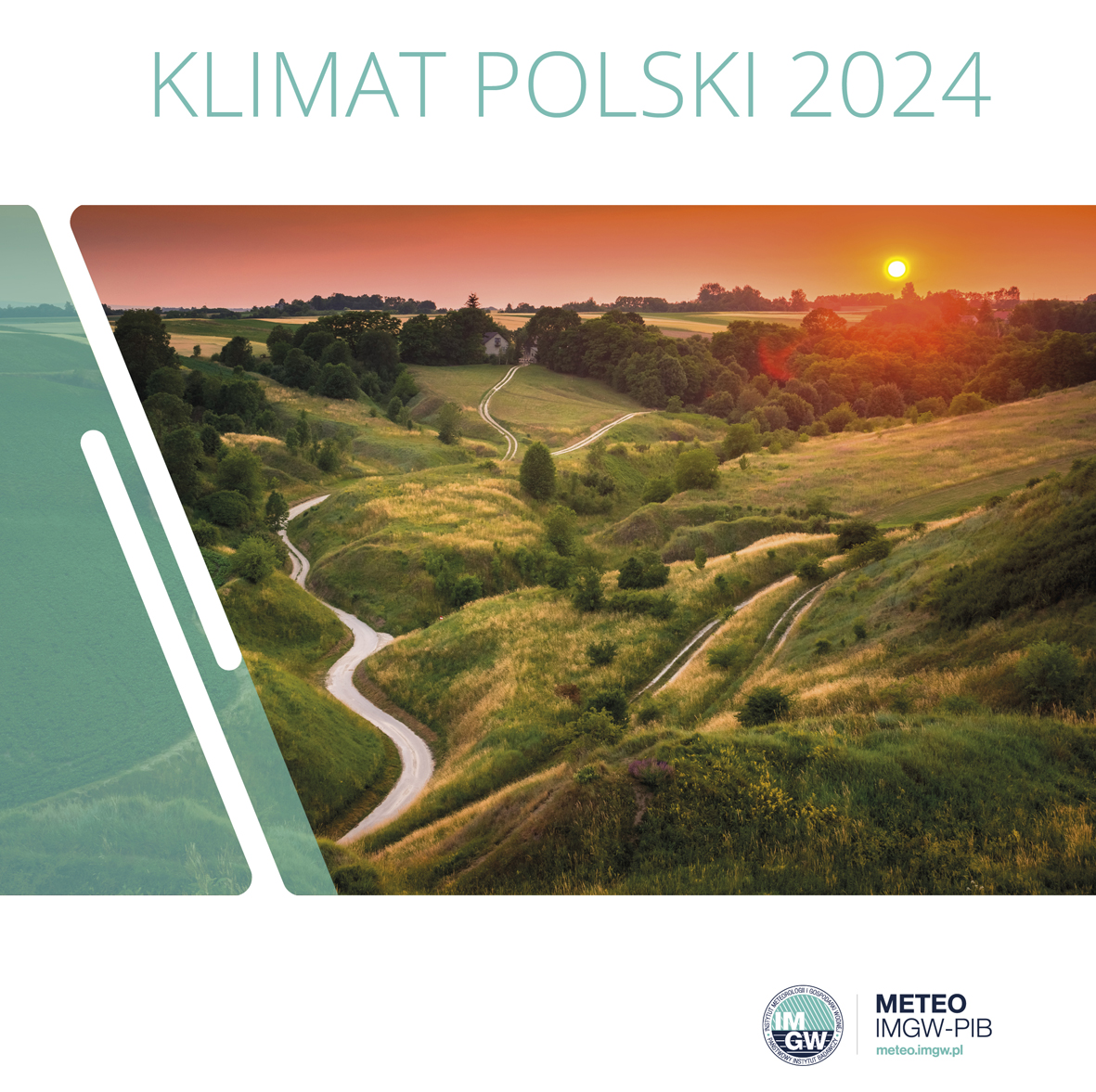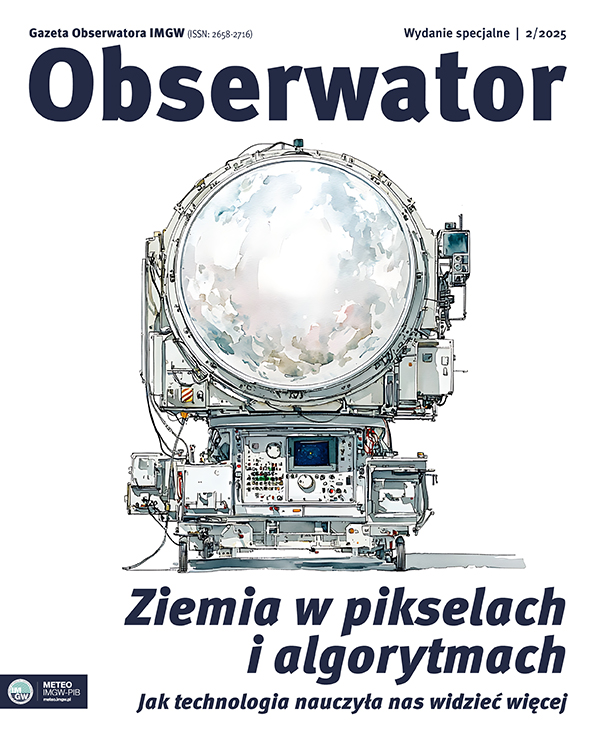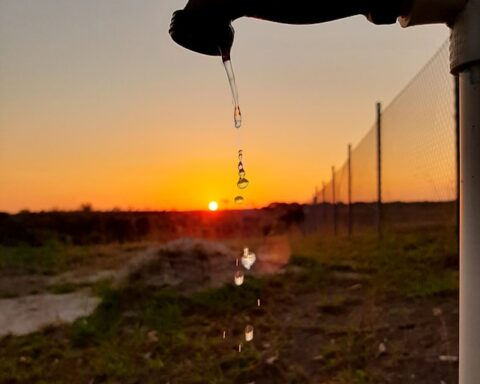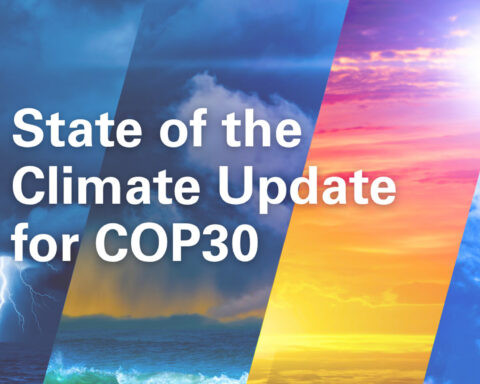In recent years, dynamic development of the renewable energy sources (RES) market has been seen, particularly in the micro-installation segment, i.e. systems chosen by owners of small households and business entities. However, as investors point out, the accounting system for energy produced by various types of installations is often unfavourable due to the „unpredictability” of individual RES sources. The digital Atlas of small-scale wind energy developed by IMGW-PIB and the Wrocław University of Technology will help producers better manage resources and generation capacity.
A very popular alternative method of obtaining heat energy in Poland is its production using photovoltaic (PV) systems and heat pumps. However, due to the weather conditions that prevail in our country – especially in the cold half of the year, when the sum of solar radiation energy may not cover the user’s current demand for electricity – the balance of supply and demand of energy from these installations is not always well balanced.
According to scientists from IMGW-PIB and the Wrocław University of Technology, wind energy may be a promising and prospective „clean energy” source in the winter. The recently introduced legislative changes should support the implementation of such investments by individual entities. On the other hand, the basic problem is relatively poor knowledge of investors in potential wind energy resources, especially at heights where it is legally[i] possible to install wind turbines for individual farms, i.e. from 3 to 12 m above ground level (AGL). In addition, the enthusiasm of potential investors may be tempered by media reports that comment on seasonal statistics compared to only selected periods, and very general and superficial conclusions are drawn on their basis.
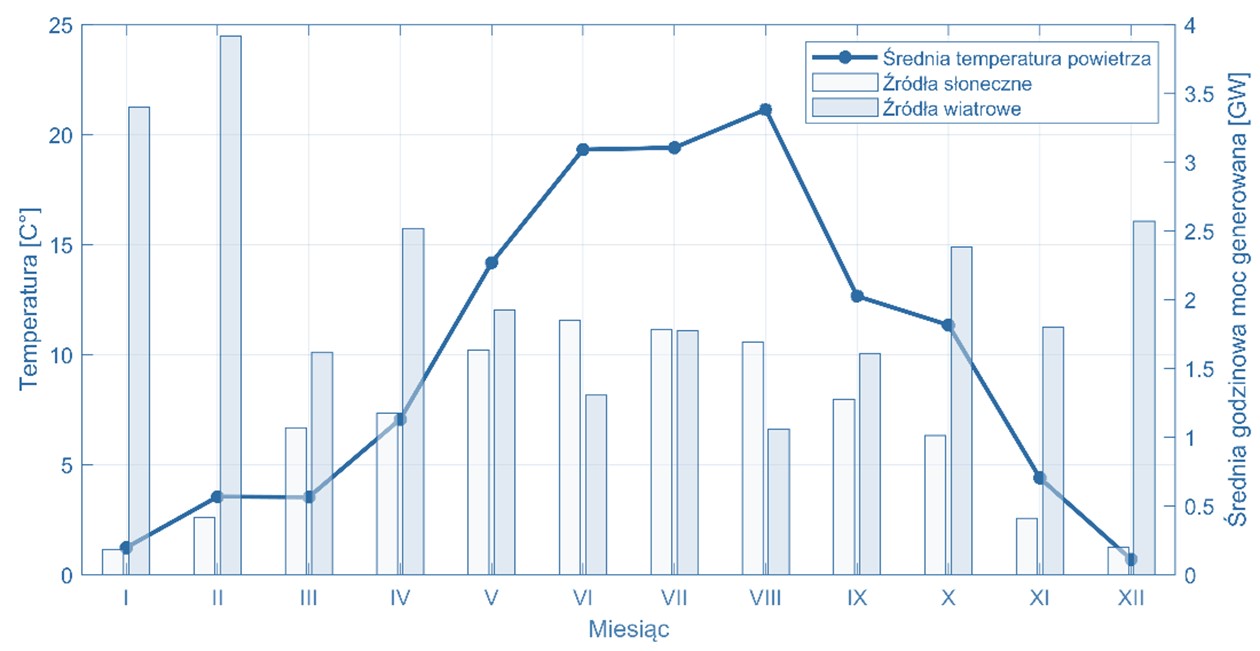
The wind velocities in Poland are relatively low and average. Moreover, they sometimes vary spatially and temporally, which affects the overall assessment of wind resources. However, in some regions of the country, especially in the north and on the coast, wind velocities are sufficiently high, and their diurnal and annual course tends to be stable. Such conditions offer the possibility of efficient use of small wind turbines.
![Average wind speed [km/h] at synoptic stations of the IMGW-PIB network on 15 January, 1992-2022.](http://obserwator.imgw.pl/wp-content/uploads/2023/05/Obraz2.jpg)
Wind speeds favourable from the point of view of wind energy are also observed in many smaller areas. However, detailed information on these is not currently disseminated. The database of wind speed measurements, although well documented and available (public data of IMGW-PIB), is limited to several dozen selected locations in Poland. This strong diversification of wind conditions means that a potential investor is often unable to make a decision based on reliable calculations regarding an investment in small-scale wind energy. A potential investor needs expert support in this process.
Currently available digital atlases, based on climatological studies from interpolation of data from measurement stations, can provide very general and illustrative information. However, their spatial resolution of a few kilometres and lack of ability to generate time series of data for detailed analysis may be insufficient. The following example shows that using of high-resolution data of 1 km × 1 km makes it possible to isolate areas in the region that are more or less predisposed to be used for small-scale wind energy. The overview map is available on the IMGW-PIB Meteorological Modelling Centre website at https://cmm.imgw.pl/ (under the tab „AMEW-PL Project”).
In the graphic below, we present a map of useful wind energy at 10 m AGL (published in „Atlas Klimatu Polski”, edited by Halina Lorenc in 2005) in comparison with a new product using data from the INCA-PL2 nowcasting model (the presented example covers the year 2019). Nowcasting forecasts are generated based on forecast fields from the AROME mesoscale model and current telemetry measurements, considering the influence of the terrain orography.
The use of data from measurement stations and their complementation with the results of high spatial and temporal resolution weather forecast systems models allows for a better representation of the actual wind conditions in the analysed area in times of progressive climate change. At the same time, the distribution picture remains consistent with studies based on long-term data, e.g. as defined in the publication of Prof. Halina Lorenc. The above approach was used in work on the Atlas of small-scale wind energy 1 km × 1 km (AMEW-PL).
![Useful wind energy at 10 m AGL in an open area in Poland [kWh/m2/year] based on measurements from the synoptic network of IMGW-PIB (1971-2000). Source: Climate Atlas of Poland (Lorenc H. 2005) and INCA-PL2 data (2019).](http://obserwator.imgw.pl/wp-content/uploads/2023/05/Obraz3.jpg)
The AMEW-PL atlas will be the first digital atlas developed for the needs of small-scale wind energy in Poland. It will be distinguished from other currently available open access atlases, such as GWA or NEWA, by its structure with a choice of content, providing information on wind energy potential at levels of 10 and 30 m AGL, and, in reference to other atlases, also 50, 80 and 100 m above ground level. And most importantly, with a surface resolution of 1 km × 1 km. The first version of the atlas will be developed based on four-year (2019-2022) hourly data from the INCA-PL 2 nowcasting model. The study’s authors assume that the time series will be successively extended with the development of functionality and the availability of reliable data.
The Atlas formula assumes the possibility of downloading a data package in the form of a report of averages (annual, monthly, daily, hourly) or selected time series, taking into account both meteorological and technical characteristics (WPD [wind power density] – theoretical wind energy potential, WEP – generated turbine power), on a daily, monthly, seasonal or annual basis. In the initial version of Atlas, similarly to the generally available GWA 3.0, it will be possible to choose one of three variants of the designed turbine power, i.e. 3.2, 6.0, or 8.2 kW of installed power. As the analytical tools develop, it is planned to provide complex catalogs for selecting technical variants of the turbines used.
In the designed version 2.0 of AMEW-PL, the basic functionalities will be supplemented with current analyses and very short-range forecasts of generated power at a resolution of 1 km × 1 km (based on the nowcasting data of the INCA-PL2 model), as well as forecasts regarding the productivity of wind turbines in a diurnal course – generated for each location in Poland in the forecast horizon of +30 h/at a resolution of 2.5 km and 72 h/4.0 km, updated four times a day. This will allow the user to manage the operation of existing installations even better, e.g. for increasing self-consumption.
More information on the Project can be found on the website of the Meteorological Modelling Centre under the tab „AMEW-PL Project„.
The AMEW-PL Project is implemented by the Institute of Meteorology and Water Management – National Research Institute in cooperation with the Wrocław University of Technology. The team composed of: B. Bochenek, Ph.D., M. Gruszczyńska, Ph.D., M. Grzelczyk, A. Jaczewski, Ph.D., J. Jurasz, Ph.D., A. Mazur, Ph.D., T. Strzyżewski, and J. Wieczorek, Ph.D. is led by Prof. M.J. Figurski.
[i] Official Journal 2021 item 724, Notice of the Marshal of the Sejm of the Republic of Poland of 14 April 2021 on the announcement of the consolidated text of the Act on investments in wind power plants.
Main picture: Gustavo Quepon | Unsplash.
